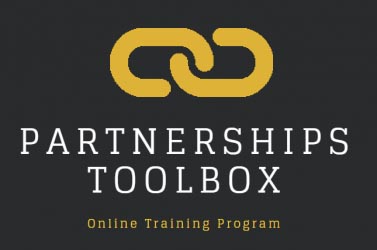So you are planning to work with others for a joint venture. Or you maybe considering working more closely to share resources and services. Everything seems fine at the start, but things can get complicated very quickly and you may end up disappointed or worse still, be left tens of thousands of dollars out of pocket and a damaged reputation.
Here are nine steps that you should follow improve the chances of a successful partnership venture:
- Never enter a partnership arrangement without being clear as to the need:
a. For the venture or project
b. For a partnership
If there is not a strong need, it could be difficult to get buy-in from partners.
Each partner must be able to see the benefit for their own business and must be clear on their roles and responsibilities as well as investment in time, finances and resources. Overall, the project must be of mutual benefit to all partners.
2) Engage with partners who are committed to the partnership, that you can trust (there are different levels of trust required for different levels of partnerships), that relate to your values and philosophy, and understand your culture.
An absence of any one of these could adversely impact on the foundations of your partnership.
3) Be mindful of agendas and ensure that the partnership venture has a common vision, clear objectives and expected outcomes which reduce the risk of the activity being deviated to meet the needs of one partner. The vision and objectives should be supported by strategic directions and priorities, and should be visited on a regular basis to ensure that the venture stays on track.
4) Ensure that the owners or boards of the partners are fully supportive of the partnership venture. This will involve submitting a business case and business plan to be monitored at the top level. In some ventures, there may be a governance group with oversight of the partnership. This will ensure that the partnership venture remains supported, especially when it is endorsed by an Agreement/Memorandum of Understanding signed by all partners at the start of the project or collaboration.
5) Be clear as to the level of partnership you are engaged in -networking, cooperating, coordinating, collaboration or integration. Each level requires different levels of engagement and trust as well as impacts on the operations and governance of each organisation.
7) If your partnership involves change, make sure you have a change management plan in place that is supported at the senior management level, has a clear communication structure, encourages people to get involved, can be evaluated, recognises successes, keeps things flowing along and builds in the celebration of achievements. Engage change enablers such as access to expertise, time, funds, IT/communication platforms, systems and organisational policies and procedures. Short term performance management plans encourage employees and volunteers to carry out small, manageable, projects to assist with the change project.
8) Manage risks before they manage you. Prepare, implement and monitor a risk management plan to reduce the impacts of changes to partners, commitment and activities, as well as to address potential conflict.
9) Benchmark the need for the partnership and evaluate the partnership to give you the skills to do things even better next time.
And finally… never lose sight of the need. Never lose sight of the vision and objectives and never forget that you are not the only person or business/organisation involved in the partnership – be flexible, play your part, consider others and plan the partnership to be inclusive and to succeed.
How many times have you heard of partnerships that didn’t go as planned? Partnerships that started with a lot of enthusiasm, a brilliant idea, and plenty of positive energy and goodwill, which turned sour to the point that the goodwill left the partnership a long time before the end. What if you had the tools to examine the potential partnership right at the start? Tools that would come in useful to avoid misunderstandings later? Which could help you to determine whether you are a good fit?
The Community Entrepreneur has developed the Essential Partnerships Toolbox designed to help you analyse the need for the partnership, determine whether you are a fit, build a robust business case, minimise risks and prepare for change. This isn’t the legal document; we leave that to the lawyers. This toolbox gives you the tools to plan your partnership. Be amongst the first to take advantage of this toolbox. Contact Pat or Karen at The Community Entrepreneur – 03 9005 5889 (support@thecommunityentrepreneur.com).

If you are ready to take your partnership venture to the next level, contact us now to book in a free consult where we will discuss your needs.
